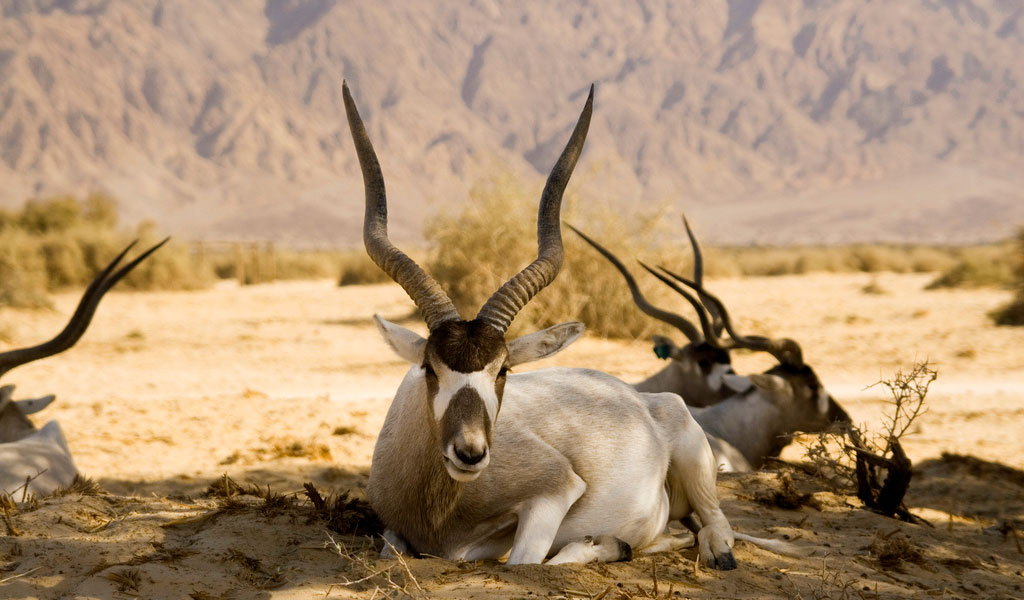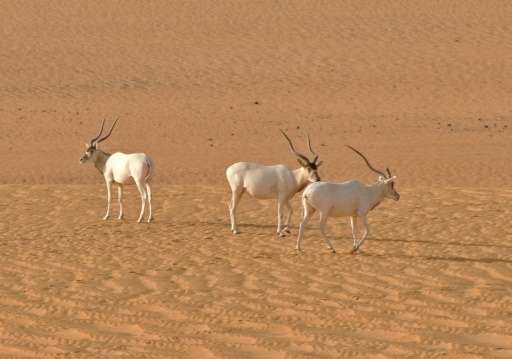
Saharan Addax antelope faces ‘imminent extinction’
Source: phys.org
The Saharan Addax antelope has been pushed to the brink of extinction by poaching and loss of habitat to the oil industry, the international organisation that tracks threatened species said Friday.
An extensive aerial and on-the-ground survey in the antelope’s native region in Niger found only three specimens in the wild, the International Union for the Conservation of Nature (IUCN) reported.
“It is a desperate situation,” said Alessandro Badalotti, coordinator for Save Our Species, an IUCN-managed body that provides grants for the protection of highly threatened animals.
“In the current context, the species is doomed to extinction in the wild,” he told AFP.
Even if there are actually five times as many specimens still roaming the Niger desert, he added, this is still too few to guarantee a self-sustaining population.
Without genetic diversity, the chances of unhealthy offspring rises dramatically.
“We are witnessing in real time the extinction of this iconic and once plentiful species,” said Jean-Christophe Vie, deputy director of the IUCN’s Global Species Project.
Male Addax stand up to 115 centimetres (45 inches) tall, and weigh as much as a full-grown man. Females are smaller.
Interestingly, their coats turn pure white in summer, perhaps to reflect the searing heat that pounds the Niger desert.


As recently as 2010, surveys concluded that there were still some 200 Addax in the wild.
But a massive oil-extraction installation set up by the China National Petroleum Corporation has proven a double threat.
Giant lorries and bulldozers have ripped up large swathes of the antelope’s habitat, reducing the land on which it forages for sparse shrubs and herbs.
Poaching for dinner
But military personnel assigned to protect the oil operation have also been poaching the animals in their last haven, the Termit and Tin-Toumma National Nature Preserve, the IUCN said.
“Eight skulls were found during the survey, some of them near the army encampment,” said Badalotti, who conjectured that the soldiers shot them for meat.
David Mallon, who heads the IUCN’s Antelope Specialist Group, said that the Addax is “simply unable to cope with the current level of disturbance and illegal killing.”
If there is still hope for the species, it lies in coordinated captive breeding programmes in zoos around the world, especially in the United States, Japan and Australia.
They harbour some 600 specimens. In addition, another two hundred roam inside a large nature park in Morocco, south of Agadir, while hundreds more are held in private collections.
The fate of another desert antelope, the Scimitar-horned oryx, could foreshadow what’s in store for the Addax.
The large, distinctive oryx—hunted for its long, gently-curved horns—was classified “extinct in the wild” in 2000, and had not been seen for many years before that.
As with the Addax, breeding centres house sizeable captive populations, notably one near Abu Dhabi.
But with none in the wild, repopulating their natural habitats will be very difficult.
“These programmes are incredibly expensive as compared to reducing threats in the wild,” said Badalotti.
“It is always best to maintain a population in the wild that can be reinforced by captive-bred individuals.”
